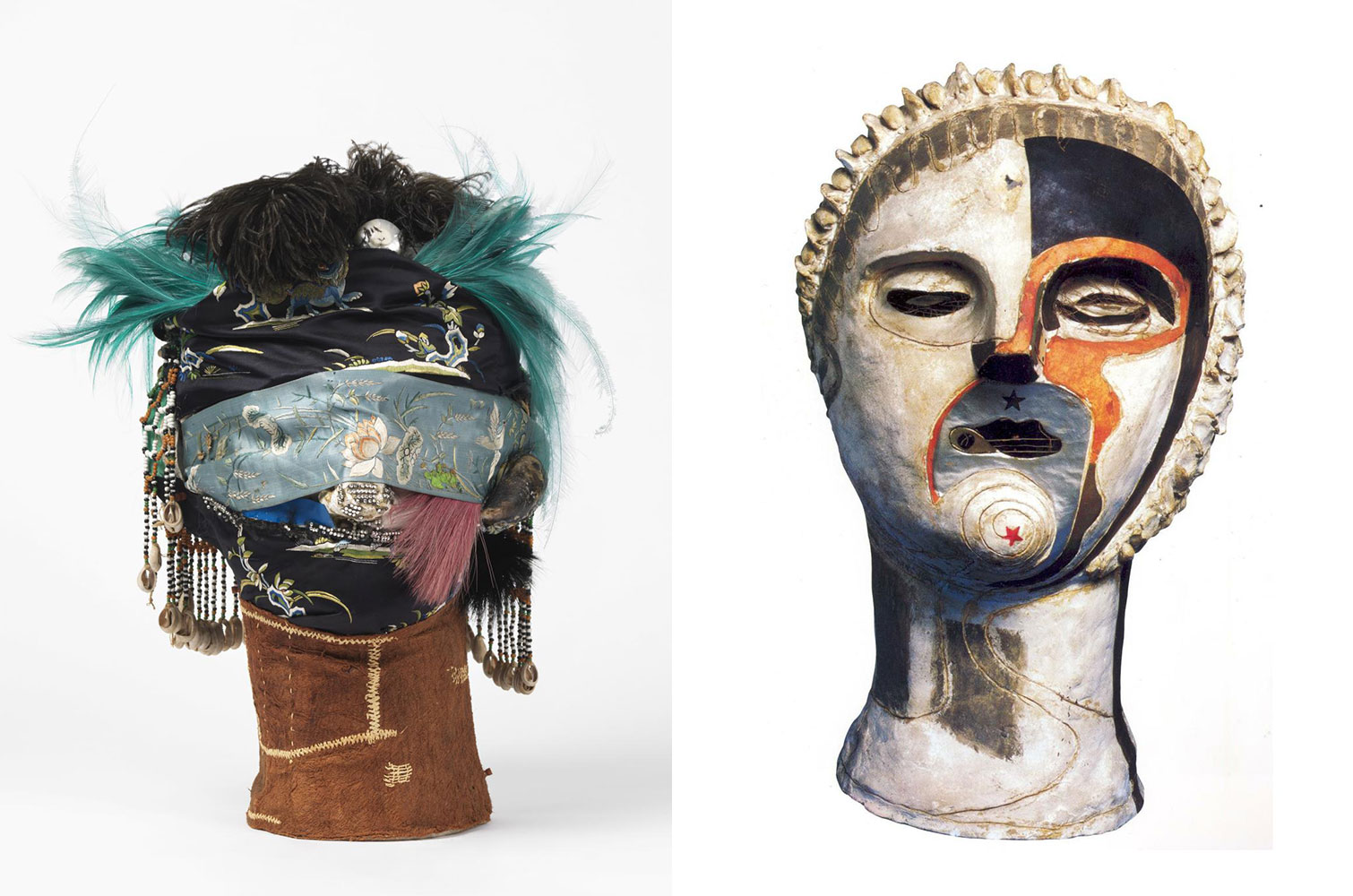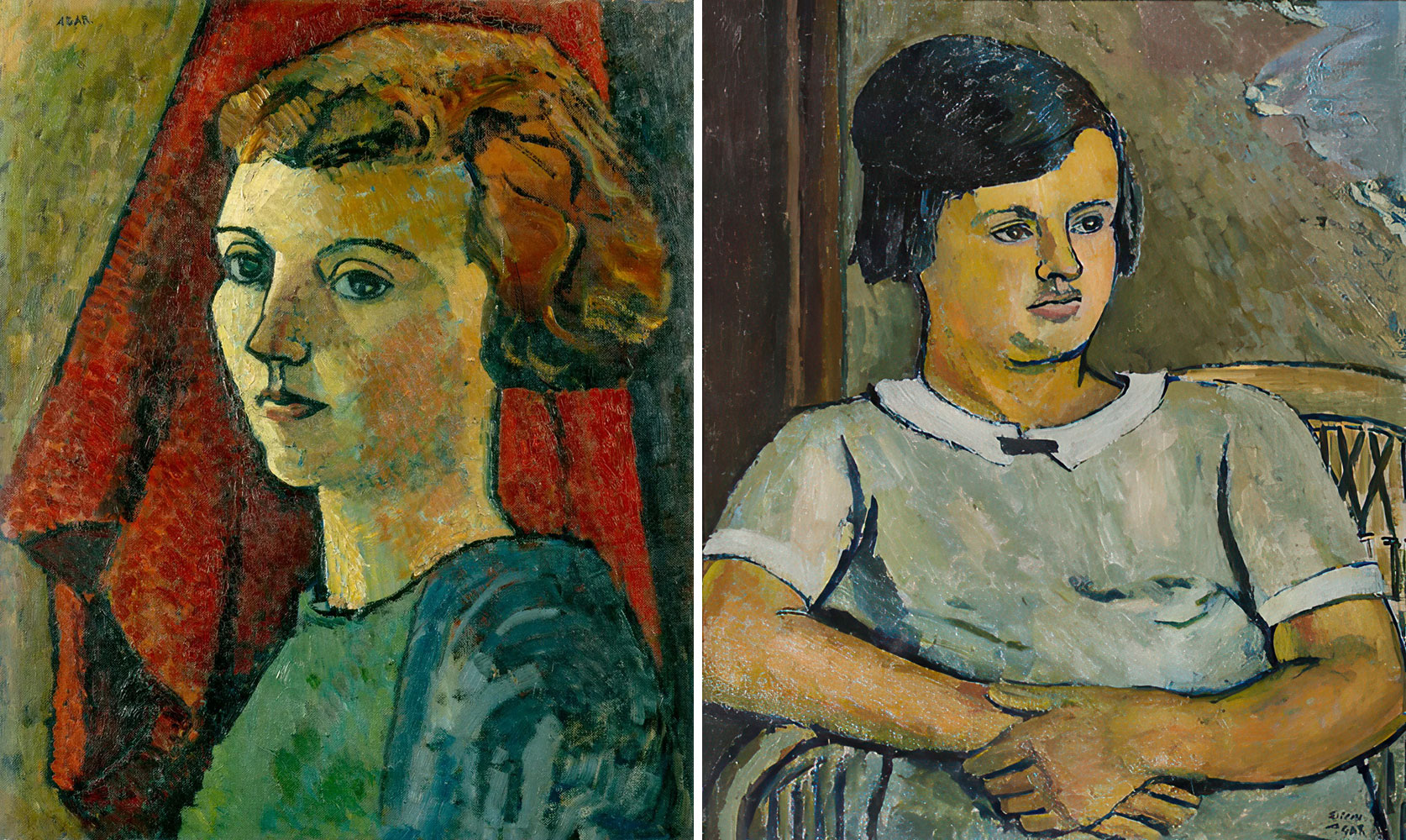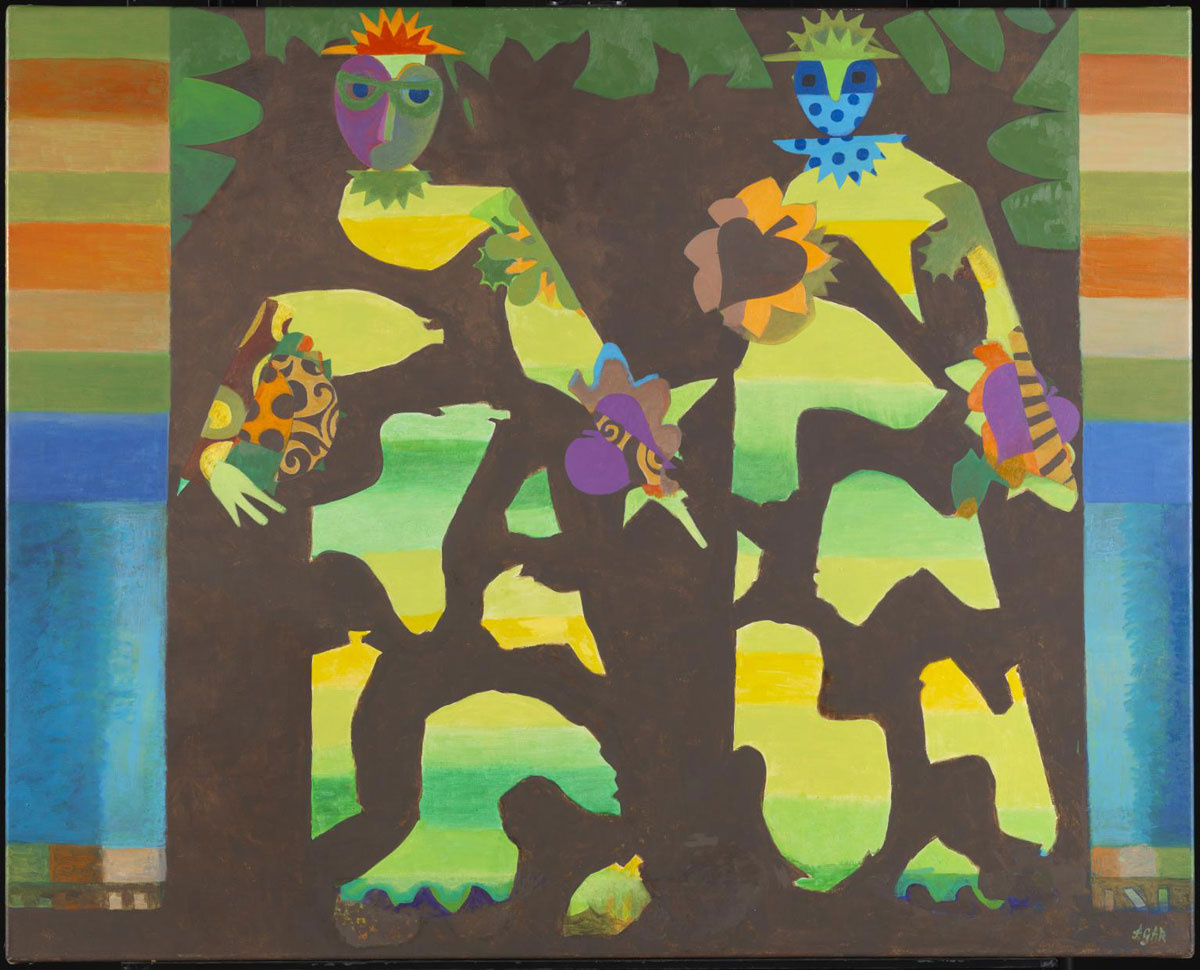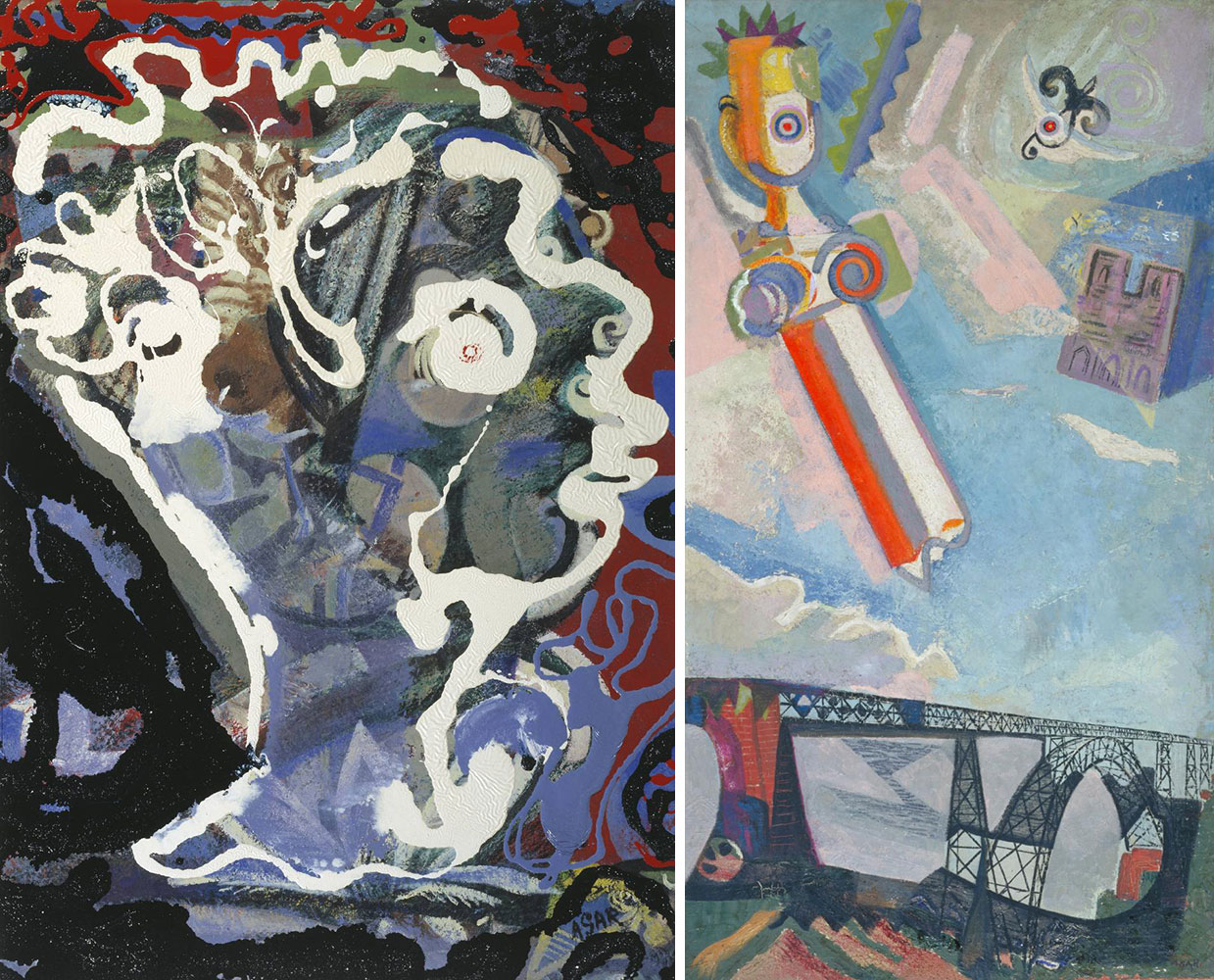ART CITIES:London-Eileen Agar
 Eileen Agar was, one of the most adventurous and influential artists of the Surrealist movement in Britain, working with a prolific energy which sustained her into her late eighties. Agar’s practice was diverse, moving freely through painting, photography, collage and sculpture, but was bound together by an emphasis on the germinal power of imagination, and by a love of natural and organic forms.
Eileen Agar was, one of the most adventurous and influential artists of the Surrealist movement in Britain, working with a prolific energy which sustained her into her late eighties. Agar’s practice was diverse, moving freely through painting, photography, collage and sculpture, but was bound together by an emphasis on the germinal power of imagination, and by a love of natural and organic forms.
By Efi Michalarou
Photo: Whitechapel Gallery Archive
The exhibition “Eileen Agar: Angel of Anarchy” is the largest exhibition of Agar’s work to date and celebrates the crucial role that Agar played within the development of European 20th Century culture. It features over 100 paintings, collages, photographs, assemblages and archive material, much of which has been rarely exhibited. Throughout her nearly 70-year career, Agar synthesised elements of two of the 20th Century’s most significant artistic tendencies: Cubism and Surrealism. The exhibition explores how these early inspirations rapidly developed into her very personal style that offered a moving commentary on society over a period of tremendous social change. Fascinated by classical art, ancient mythologies, the natural world and sexual pleasure, Agar mined these subjects and her own biography for the forms and content that filled her works. Born in Buenos Aires, Argentina, to a Scottish industrialist father and an American biscuit firm heiress mother, Agar described her childhood as privileged and eccentric. Agar was a rebellious child, and her mother was frustrated by her growing interest in art, which she pursued in favour of needlework or “practising her comportment”. At the age of six, Agar was sent to boarding school in England where she undertook the rest of her education and made her base for the rest of her life. The exhibition examines Agar’s entire oeuvre, from early works bearing the influence of her classical education at The Slade School of Fine Art, including “Eileen Agar” (1927) and the previously unseen painting “Joseph Sleeping” (1929), an intimate portrait of her partner with whom she had moved to Paris in 1928. Having destroyed all of her previous work in 1925, these early works mark Agar’s rebirth as an independent artist. In Paris she learnt the principles of Cubism and was introduced to the anarchic tendencies of Surrealism. These influences are seen in early masterpieces, “Autobiography of an Embryo” (1933-4) and “Quadriga” (1935), her submission to the 1936 International Surrealist Exhibition held in London, where Agar was one of the few women to be included. On her return to London in 1930, Agar started working with found objects including shells, bones, plant life, marine detritus, textiles and feathers to create sculptures that embodied her embrace of Surrealist wit and irreverence, as well as her continued fascination with the natural world, particularly the ocean. The exhibition features over 15 of these sculptural works including “Angel of Anarchy” (1936-40) and “Angel of Mercy” (1934), two of her poetic plaster cast ‘Angel’ heads, as well as her assemblage, “Marine Object” (1939). During this period, Agar also started working in collage and the exhibition features over 50 examples, such as “Precious Stones” (1936), “Erotic Landscape” (1942) and one her last collage works, “Spider Woman” (1983). Throughout the 1930s Agar also travelled frequently to France, and the exhibition includes her rarely seen “Ploumanac’h Rock” series of photographs taken while on holiday in Brittany in 1936 – works that became a lasting source of inspiration throughout her career. Like many artists, Agar struggled with anxiety during the Second World War and spent much of her time working for the war effort. The encroaching conflict made her feel uneasy about artistic output as a worthwhile endeavour and she struggled to concentrate on painting. Post-war prosperity and hopefulness brought a renewal of inspiration and she began to focus on more joyful subjects and scenes of abundance, which are seen in works such as “Dance of Peace” (1945) and “Cornucopia” (1949). Her work began to blur the divisions between collage, drawing and painting and she renewed her interest in surrealist techniques including automatism, frottage and decalomania. The fluidity of automatic painting helped to free Agar from the anxieties that overwhelmed her during the war, and her experiments with spontaneous painting can be seen in “Tree Torso 4” (c.1950), “Head of Dylan Thomas” (1960) and “Pollen” (1960). Agar exhibited less internationally after the war, however there was a huge resurgence of interest in her work in the 1970s. She worked prolifically until her death in 1991 and the final section of the exhibition focuses on the larger and more tightly composed works created during the later years of her career. Highlights of this period include a series of paintings she created in 1985, inspired by her “Ploumanac’h Rock” photographs taken almost 50 years before. These are exhibited together comprehensively for the first time. Celebrated as an artist and for her trailblazing experiments in surrealist fashion design, Agar modelled for Issey Miyake at the age of 87 and was made a Royal Academician in 1990.
Photo: Eileen Agar, The Reaper,1938, Gouache and leaf on paper, Tate Collection, © The estate of Eileen Agar
Info: Curator: Laura Smith, Curator, Assistant Curator: Grace Storey, Whitechapel Gallery, 77-82 Whitechapel High St, London, Duration: 19/5-29/8/2021, Days & Hours: Tue-Sun 11:00-18:00, Thu 11:00-21:00, www.whitechapelgallery.org

Right: Eileen Agar, Angel of Mercy, 1934, Collage and watercolor on plaster, The Sherwin Collection, Leeds, UK, , © The estate of Eileen Agar

Right: Eileen Agar, Fish Basket, c.1965, Wicker, shell and wood on cardboard base, Tate Collection, © The estate of Eileen Agar

Right: Eileen Agar, Mooma, 1927, Oil on canvas), Private Collection, © The estate of Eileen Agar



Right: Eileen Agar, Three Symbols, 1930, Oil on canvas, Tate Collection, © The estate of Eileen Agar


Right: Eileen Agar, Untitled, 1936, Oil on canvas, Bradford Art Galleries and Museums, West Yorkshire, © The estate of Eileen Agar

